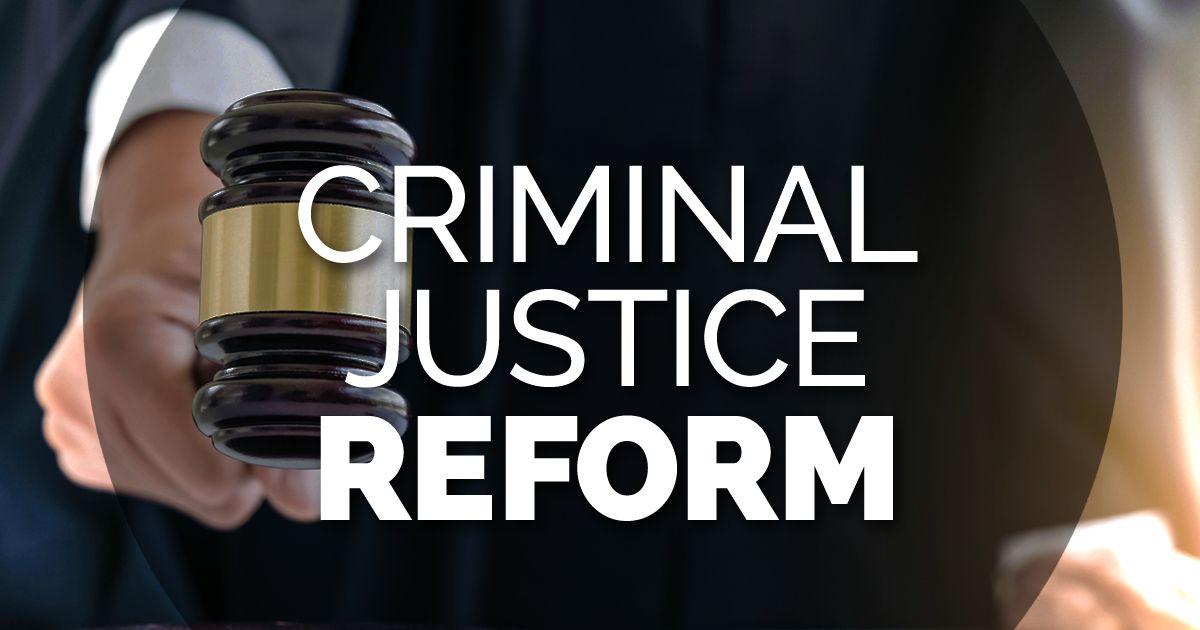

by Ken W. Good
I. Introduction
The private surety bail system has been in place for over 200 years. The purpose of bail is to allow someone accused of a crime to get out of jail while their case is pending. In exchange for freedom, the accused promises to appear in court any time it demands his appearance. If a defendant fails to appear, his or her bond is forfeited and a warrant issued for arrest. The criminal case is then placed on hold until the accused reappears. This could be hours, days, weeks or even years -- and occasionally never. As we look to improve the bail system in Texas, we must first begin with the proposition that says “we should do no harm.” We should not initiate changes which will make the system worse by created unintended consequences that create even more problems.
II. Goals of Reform
To reform the bail system, we have to determine what are the goals of reform. There are a lot of social ills in the world: drug use, failing schools, disintegrating families, mental illness and lost economic opportunity. But is bail reform the place to address these social issues?
Chief Justice Hecht of the Supreme Court of Texas argues that jail overcrowding is a reason for bail reform. However, some in law enforcement maintain that the criminal justice system should be detaining more individuals before trial to ensure public safety. Meanwhile, Governor Greg Abbott recently tweeted that anyone accused of killing a cop should not be eligible for bail.
At the same time, the federal courts have identified issues for which counties should use a bail schedule, but do not allow an accused to ask for a deviation from the scheduled amount if they claim poverty. These courts have mandated that defendants must be given such an opportunity within 48 hours of arrest. Proponents of change argue that any changes should codify the constitutional requirements set out by the courts.
Still others propose replacing one automated release method (a bail schedule) with another (risk assessment), even though scholarly research appears to have come to the conclusion that risk assessments should not be used.
So, just what should be the goals of reforming the current system? The aim of any reform should be to make the system work better. Therefore, any changes should be flexible enough to address that Texas is a big state and what might work in one county would never work in another. Further, any reforms should recognize and take into account the fact that many counties in the state are currently functioning well and are not seeking any "improvements."
III. Proposal for Bail Reform
A. Flexibility to Each County to Select the Method of Bail to be Used
1. Assessing People as they are Arrested
One of the things that could help with reforming the current system would be a better system of assessing people after they enter jail. This would enable the criminal justice system to better determine whether the defendant has a true criminal justice issue or has a mental health issue instead. If the latter, this individual would be better handled by the mental health system. Or if they are dealing with drug abuse, it would be better if this were addressed by a drug court. This would allow individuals to be directed away from the criminal justice system in appropriate situations.
2. Allow for the Use of Individual Magistration and the Use of Bail Schedules
Any reforms should allow for the quickest release possible of an individual from the county jail. At present, the decision on how an individual is to be released in Texas is determined by either bail schedules or individual magistration. Both methods should continue to be authorized in order to allow each county to determine what is in its best interest.
Contrary to some reports, the use of bail schedules have not been held unconstitutional. But if a county uses a bail schedule and someone is arrested without posting a bond and claims poverty, the county must then ensure that they have an opportunity to ask for a deviation from the schedule within 48 hours of arrest. If the county does not provide this process, it has a procedural due process problem that must be addressed. Additionally, the bail schedule should take into consideration the defendant’s criminal history and whether the defendant has previous failures to appear in his recent history.
Another option for setting bail would be to provide individual magistration of each person arrested. In these instances, a magistrate would be required to review a defendant’s criminal history, if any, and any prior history of failing to appear for court in setting bail.
Some counties might decide to combine these two methods to allow themselves the flexibility of choosing either one. This could be used effectively in large counties. The goal should be to process the largest number of people as quickly as possible. Therefore, anyone who can post a bond pursuant to a bail schedule should be processed. This would allow the county’s limited resources to be used to process people who have been arrested and have no one to contact or cannot post the scheduled amount. These individuals would be brought before a magistrate quickly and released from jail as soon as possible.
The procedures must include safeguards to ensure that the individual magistration takes place within 48 hours of arrest.
Harris County recently entered into a settlement in a federal lawsuit wherein they agreed to grant PR bonds to over 85 percent of all misdemeanor arrestees. The Texas Office of Court Administration has already taken a position that this method should not be used anywhere else in Texas. This process allows for the quick release of defendants, but they never see a magistrate. The judges have essentially no discretion and nearly all misdemeanor arrestees are automatically given a $100 PR bond without seeing a magistrate. This has led to crazy results in which defendants are receiving as many as six, seven or eight PR bonds…and sometimes even more. Further, this violates article 17.15 of the Texas Code of Criminal Procedure because bail is not being set by a magistrate who would take into consideration the various factors set forth. Instead, bail is set at an arbitrary amount contrary to article 17.15.
Additionally, a side effect of this process is a substantial increase in the number of pending warrants in the county. Harris County has seen an increase of incidents at traffic stops in which motorists are checked for warrants. Those individuals who have multiple failures to appear or who know that a warrant is pending have to make a choice in a fraction of a second of whether to turn themselves in -- or fight and run. The upsurge in warrants logically increases the likelihood of these occurrences, along with the number of times that a person will make a poor snap decision, often with devastating consequences.
3. Develop systems and/or standing orders to monitor who is in jail preconviction and order remagistration if they are still in jail after 72 hours.
Any reform of the system should include the development of a system and/or standing order to monitor who is in jail preconviction. There have been several situations where defendants have been arrested and failed to post bond, and in which it appeared that no one was tracking how long they had been in jail.
Janice Dotson-Stephens was arrested in Bexar County on July 17 on a charge of trespassing on private property. Although her bail was set at $300, it was likely that she could have been released with a mere $30 payment. However, she suffered from mental illness and refused to be interviewed. Approximately six months later Dotson-Stephens died in the jail infirmary. This was a clear failure of the system because under current law, for misdemeanor offenses such as hers, release is required after 30 days. (Tex. Code of Crim. Pro. art. 17.151 (2)).
Setting up a system of tracking who is in jail and how long they have been held would enable the criminal justice system to know when the accused must be released under existing law. It would also enable other checks to be put into place, such as a requirement that would apply to certain defendants who are still in jail after a set time, e.g. 72 hours. Such individuals could be brought back before the trial court to determine why they are still being held.
4. Take politics out of the Criminal Justice System by saying that anyone on a PR bond who fails to appear or is accused of a new crime is no longer eligible for a PR bond.
Any bail reform effort should remove politics from the process of releasing individuals from jail. These reforms should also recognize that if defendants do not appear for court then victims of crime can never receive justice. Accordingly, magistrates and courts should continue to have the discretion to allow the use of PR bonds, but this authority must have limits. If a defendant is out on a PR bond and is accused of a new crime or fails to appear, then they should not eligible for a new PR bond for a certain period of time. Accountability would require that this discretion be limited to prevent the system from being flooded with increasing numbers of backlogged cases and outstanding warrants. Unchecked, the criminal justice system would eventually be forced to shut down or the growing backlog of cases would require the creation of more costly courts to address them.
5. Review of existing laws to determine whether some crimes should no longer be crimes.
Reforming the bail process should include a review of what offenses constitute crimes in Texas. Crimes that have been on the books for many years (often created during a different time in our history) and which should no longer be considered offenses in our state, should be eliminated.
6. Mental Heath Patients should be directed to mental health facilities and not jails.
In Texas some of the the largest mental health facilities are the county jails. Nationwide Texas ranks 49th in spending for mental health. The failure to address mental health issues has caused a strain on the criminal justice system. In some situations, an accused stops taking their medications because for whatever reason. Their mental health issues increase and cause them to be arrested. The Las Angeles Times recently reported that Mental Illness was much more pervasive in the count’s homelss population that officials had previously reported. Of approximately 4,000 questionnaires taken about 76% were observed to be affected by mental illness, substance abuse, poor health or a physical disability. To see the article CLICK HERE.
Any reform to our bail laws must include mechanisms to address mental health in Texas. Directing these individuals to county jails is not working and is pushing a criminal justice system that is already under stress to the breaking point,
7. Creating additional trial courts.
In counties where there are a large number of person accused of felony charges awaiting trial, any reform should consider the creation of additional district courts to address the backlog of cases. An analysis of these areas would need to take into account whether existing district courts are resolving an average number of cases consistent with the remaining district courts or if they may actually be part of the problem.
8. The Use of Risk Assessments Should Be Discouraged
Pretrial risk assessment has become the darling of criminal justice reform, led by a number of consulting groups that have been contacting counties across the nation and offering to help reform their practices through these means. Now the Texas Office of Court Administration has developed its own risk assessment tool. The problem is that time has not been very good to these cornerstones of bail reform.
First, essentially all of the proponents who originally advocated the use of pretrial risk assessments now oppose their use. Further, technology companies and scientists have come to the conclusion that risk assessments should not be used as a part of bail reform at all. The Professional Bondsmen of Texas has released a summary of this information. You can see the pamphlet by CLICKING HERE.
IV. Conclusion
Any reform of Texas' criminal justice system must be multi-faceted to be successful. Further, it must be flexible so that it can be implemented in both the large and small counties across the state. What may work in one county, might be too costly or not needed at all in another.
Most important is what we stated at the beginning, that the first rule is “to do no harm.” As much as some may feel that our criminal justice system is in need of an overhaul, we must not be reckless in plunging ahead with changes that may result in a catastrophe for our state. The Professional Bondsmen of Texas is committed to working with all participants in developing improvements to the current system.







